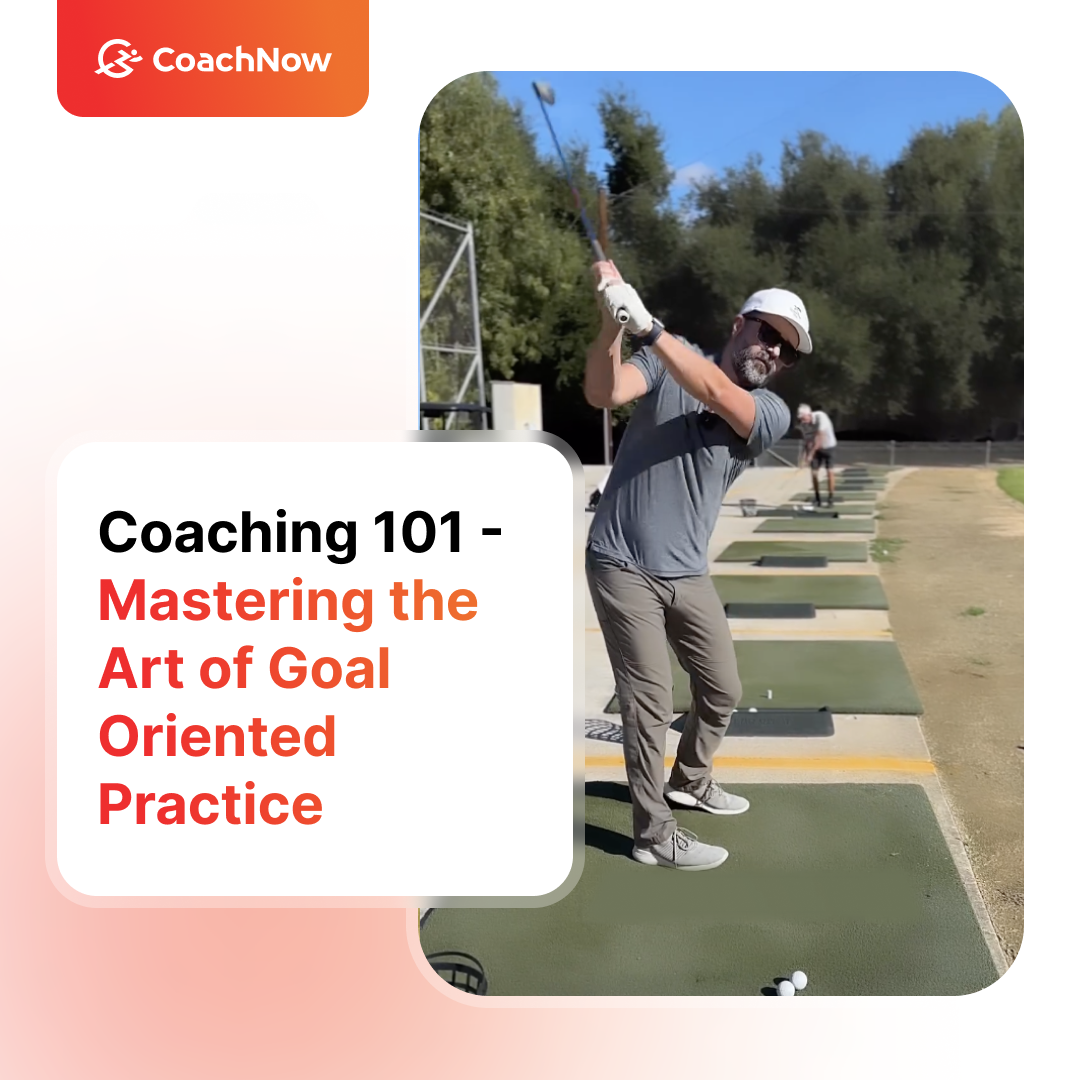Far too often, coaching and practice sessions become
reactive.
Your athlete arrives, tells/ shows you what they’ve been working on, and you give feedback/ corrections on everything you notice.
But this approach lacks a key component to any successful coaching session: Goal-Orientation.
In other words, you wanna split out your feedback into different levels. Use your long-term development plan and coaching sessions to isolate exactly where the athlete needs to improve and set what ‘success’ looks like accordingly.
Truth is, every technical movement consists of countless micro-movements. Performance in skill-sports depends on how these micro-movements work together to create a result.
So when your athlete’s performance starts to drop, I suggest you set a very specific first goal: perfect the movement in isolation.
Here you should rely on CoachNow’s Video and Image analysis suite to capture and analyze every detail of their technique in real-time. Break down the technical pieces of the movement before you even worry about what happens next.
Don’t bog them down with tons of feedback - first you gotta start with the basics. This stage is about perfecting movements without the added pressure of results.
Their goal should simply be getting comfortable while learning what the target movement feels and looks like.
Then, once they’ve mastered the technical movements, you set the second goal: maintain your form with a real ball.
Here you introduce the ball, but ignore the result. You don’t stress about contact, where the ball lands, or anything that happens after the swing.
Their goal is to repeat the movement and build awareness now that another object has been introduced.
Then, once everything is dialed in, you simulate a more realistic game day scenario.
In our golf example, this is where you add on analysis of ball contact, distance, speed, and accuracy.
You blend all the skills together and demonstrate how each piece works together to form a greater whole.
Rinse and repeat whenever the athlete begins to struggle with their form. Just take them back to square one.
Your athlete arrives, tells/ shows you what they’ve been working on, and you give feedback/ corrections on everything you notice.
But this approach lacks a key component to any successful coaching session: Goal-Orientation.
In other words, you wanna split out your feedback into different levels. Use your long-term development plan and coaching sessions to isolate exactly where the athlete needs to improve and set what ‘success’ looks like accordingly.
Truth is, every technical movement consists of countless micro-movements. Performance in skill-sports depends on how these micro-movements work together to create a result.
So when your athlete’s performance starts to drop, I suggest you set a very specific first goal: perfect the movement in isolation.
Here you should rely on CoachNow’s Video and Image analysis suite to capture and analyze every detail of their technique in real-time. Break down the technical pieces of the movement before you even worry about what happens next.
Don’t bog them down with tons of feedback - first you gotta start with the basics. This stage is about perfecting movements without the added pressure of results.
Their goal should simply be getting comfortable while learning what the target movement feels and looks like.
Then, once they’ve mastered the technical movements, you set the second goal: maintain your form with a real ball.
Here you introduce the ball, but ignore the result. You don’t stress about contact, where the ball lands, or anything that happens after the swing.
Their goal is to repeat the movement and build awareness now that another object has been introduced.
Then, once everything is dialed in, you simulate a more realistic game day scenario.
In our golf example, this is where you add on analysis of ball contact, distance, speed, and accuracy.
You blend all the skills together and demonstrate how each piece works together to form a greater whole.
Rinse and repeat whenever the athlete begins to struggle with their form. Just take them back to square one.
Goal #1: Improve your form with no ball.
Goal #2: Add the ball while maintaining good form. Ignore the results, focus on the movement.
Goal #3: Analyze the final result once everything is dialed in.
It may sound simple, but isolating each step like this can help give your athlete the “ah-ha” moment that every coach strives for.
Skills should be built up piece by piece. And throughout the whole process, make sure your athlete knows how their goals shift as they improve.
Here’s the MOST important part.
The improvement process is hard, it takes time, and will make your athletes want to quit somewhere along the line.
Your job is to help them own the correct Goal Orientation so that they stick with it and see the fruits of their labor.
Here’s to building better (and happier) athletes faster!
Skills should be built up piece by piece. And throughout the whole process, make sure your athlete knows how their goals shift as they improve.
Here’s the MOST important part.
The improvement process is hard, it takes time, and will make your athletes want to quit somewhere along the line.
Your job is to help them own the correct Goal Orientation so that they stick with it and see the fruits of their labor.
Here’s to building better (and happier) athletes faster!
